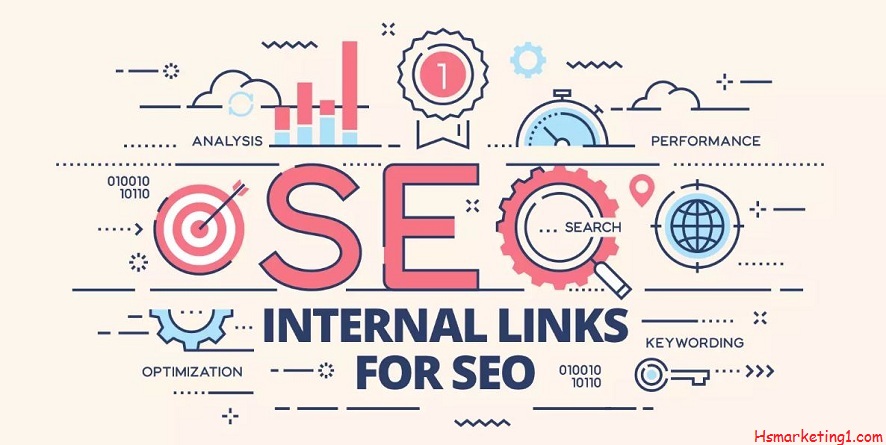
September 30, 2023, 1 Comment
Internal Links Analysis for SEO: A Comprehensive Guide
Internal Links for Better Google Rankings
Internal links are like hidden treasures on your website. They hold the key to boosting your visibility on Google. Imagine them as pathways that help Google explore and understand every nook and cranny of your site. When used wisely, these links can even make your most important pages shine brighter in Google’s eyes. In simple terms, internal linking is a must for anyone aiming for higher Google rankings.
But it’s not just about Google. Internal links also work like signposts, showing search engines which pages are crucial, guiding them through your site and giving each page a context that makes sense.
In this blog post, we’ll share three smart strategies to supercharge your internal linking. So, get ready to uncover the secrets of internal links and take your website to new heights!
[Effective Outreach Strategies for Manual Link Building]
Understanding the World of Internal Links
What Are Internal Links?
Internal links are like the secret passages of your website. They are the links that connect one page to another within the same website. Unlike external links that take you to other websites, internal links keep you within the cozy confines of your own site.
Different Types of Internal Links
Now, let’s dive into the different flavors of internal links, each serving a unique purpose in your website’s architecture:
Navigation Links:
Think of these as your site’s tour guides. You’ll find them in the header or footer of every webpage, and they give visitors a map of what’s important on your site. They’re like signposts that help you find your way around.
Category Links:
These are like your site’s index. They appear in the left sidebar and help you refine your search for specific topics or products. Paying attention to these can boost your site’s organic traffic.
Content Links:
Imagine you’re running a travel site. These links provide context to your content. For example, they help your readers distinguish between “Rome, Italy” and “Rome, Indiana” in your text. Sadly, many companies overlook these, but they can be real game-changers.
Product Links:
If you’re selling products or services, these links are your best friends. They show up on product pages, offering cross-sell and up-sell opportunities. They help both visitors and search engines find related products, so make sure to use detailed and unique descriptions.
Internal Link Modules:
These are like the shortcuts in a video game. They’re the smartest companies’ secret weapons. Instead of following the traditional hierarchy of your website (think of it as branches on a tree), internal link modules let you jump straight to the information you need. They are the express lanes to discover more about your site.
So, whether you are guiding visitors through your site or helping search engines explore its depths, internal links are your trusty companions on this digital journey.
The Hidden SEO Gem: Internal Links
Why Should You Care About Internal Links?
When you click on a link, it is not just about the page you land on. The magic of internal links goes deeper than that. They play a crucial role in SEO, yet many overlook their importance.
Your website’s internal links serve as a roadmap, helping both Google and your site’s visitors navigate its intricate structure. Google uses this map to crawl and access all your content while visitors use it to explore related blog posts, products and services.
But it does not stop there. The words you click on in an internal link known as anchor text, give Google hints about the topic of the linked page. So, they are like signposts with additional information.
Furthermore, internal links help establish a pecking order on your site passing valuable link juice from important pages to those with less authority.
Mastering SEO with Internal Links: Take Control of Your Rankings
Here is the golden rule: optimizing internal links is easier than chasing external backlinks. Your website is under your control and you can fine-tune your internal linking strategy whenever you please.
In fact, Google takes both external and internal links into account. When assessing your content’s authority and understanding the relationships between pages.
To put it simply, proper internal linking lets you harness two vital ranking factors: page authority and content relevance. Check out the case study about the Daily Mail which struggled due to a weak internal linking strategy.
So the bottom line is that internal links are your secret weapon for mastering SEO. They give you the power to shape your content’s authority and relevance in relation to other pieces of content.
Google is following these links to crawl your web pages. You can use your internal linking strategy to identify new pages for crawling. Also, you can transfer link juice to boost the authority of specific pages by interlinking them with more authoritative ones. So you must start a journey to enhance your internal linking strategy.
Crafting a Solid Internal Linking Strategy: Your Roadmap to SEO Success
Navigating the World of Internal Linking
Building a strong internal link strategy requires you to follow some fundamental principles. As you embark on your internal linking journey, keep these key questions in mind:
Are you prioritizing the important pages?
One common mistake many websites make is overloading their pages with internal links just for the sake of SEO. Instead, it’s crucial to be discerning. Focus on linking to the most valuable and significant pages. But when your website boasts hundreds of thousands of pages, identifying which ones deserve priority can be a challenge.
Tools like ClarityAutomate Link Optimizer take the guesswork out of the equation. They analyze your site’s content, performance and competition to construct semantic link clusters automatically. You can pinpoint the optimal internal linking opportunities and identify target pages that need connections but lack them.
Is Accessibility a Priority?
The deeper a page is buried within your site’s hierarchy, the longer it takes for users and search engine crawlers to reach it. To enhance accessibility, always aim to link directly to the page, creating the shortest path possible.
For large-scale SEO operations, optimizing internal links for thousands of pages may seem like a big task requiring a dedicated development team and significant time investments. Fortunately, Link Optimizer automates implements and tracks the performance of deep internal links at scale. This streamlines the process, increasing discoverability while still affording you complete control.
Anchor Text: Be Clear and Consistent
Google relies on anchor text to understand the topic of the linked page. So choose your anchor text wisely. Avoid vague or generic phrases like “Click Here” or “Read More” whenever possible. Clarity and relevance should be your guiding principles.
Steering Clear of Broken and Redundant Links
Broken links not only disrupt the user experience but also halt Google’s crawlers in their tracks. Always test your links to prevent users and bots from landing on a frustrating 404 error page. Additionally, ensure that your links provide clear and accurate directions and avoid dead ends.
When redirecting pages to new URLs, do not forget to update the anchor text to avoid any confusion about where the link will lead. Be cautious about linking to different versions of the same page, especially if they contain dynamically-generated content. Use a consistent version of the page to ensure a seamless user experience whenever feasible.
By following these internal linking principles, you can optimize your site for both users and search engines.
Changing the Crawling Method for Your Links
Site owners may ensure that just the search engines go to the exact locations they want to go on their site by following the basic rules and doing everything correctly.
It is simpler to manage how your site gets crawled and ranked according to your own requirements. When the proper directives, meta tags and instructions are in place.
Internal Linking Strategy Through Advanced Techniques
Building a solid internal linking strategy is essential. To truly harness the power of internal links, consider these advanced strategies:
1. Create a Web Graph Structure
Internal linking may seem straightforward—just connect related content, right? However, it often lacks a strategic approach in practice. Instead of haphazardly linking content, adopt the concept of a “topic cluster.”
Topic Cluster Model: This structure revolves around a central pillar content piece that links to all other relevant pages on your site, and these pages, in turn, interlink with each other.
Why It Works:
- Equally distributes link equity among relevant pages.
- Offers users easy access to more related information, regardless of their landing page.
- It helps search engines grasp the relationships between your content and aiding rankings.
Evaluating your current internal linking structure can be challenging. Fortunately, there are tools like Google Search Console for basic audits and more comprehensive solutions like Internal Link Analysis (Tool) for in-depth insights.
2. Optimizing Anchor Text Relevance
Anchor text is vital for search engines to understand content context. Using generic phrases like “Click Here” or “Read More” provides little context.
Research shows that exact match anchor text (matching the target keyword) can significantly impact keyword rankings. Google uses internal anchor text to gauge content relevance.
To optimize anchor text:
- Avoid generic phrases.
- Ensure the anchor text aligns with the target page’s topic.
Tools like internal link analysis can help you identify and replace sub-optimal anchor text.
3. Identify and Strengthen High-Value Pages
Implement this strategy by:
- Identifying high-value pages with limited internal links (use keyword rankings as a guide)
- Building more internal links to these pages, concentrating on passing link equity from high-authority pages.
By strategically reinforcing link equity and relevance to these pages. you can boost their visibility, keyword targeting and overall impact on your website SEO.
Conclusion
While SEO experts recognize the significance of internal linking. Often insufficient attention is paid to the selection of interconnected content and the strategy employed.
By grasping the significance of internal links and comprehending their mechanics. You are taking the first steps toward crafting a well-planned strategy. This strategy promises structured outcomes, ultimately enhancing your site’s search visibility and elevating the relevance of your content to target keywords.






Boost Your Page Authority With Internal Link Strategy - HS Marketing
September 30, 2023[…] Internal Link Analysis tool offers unparalleled insights into your internal linking strategy. It reveals the distribution […]